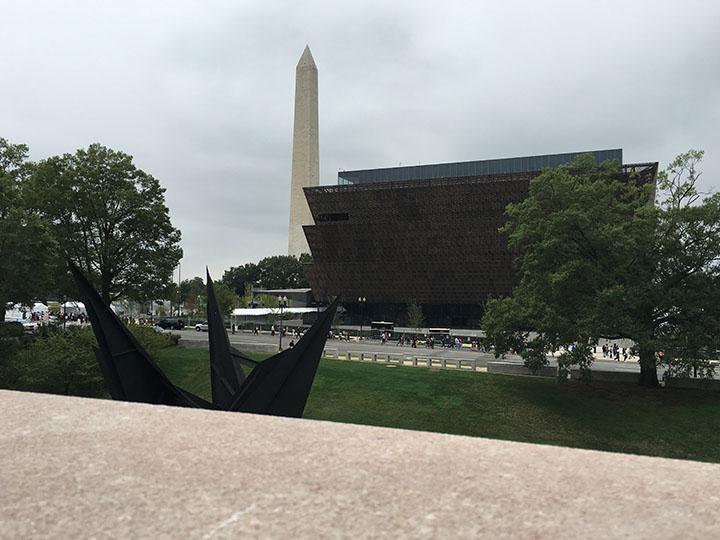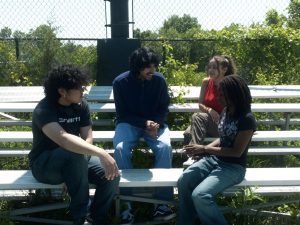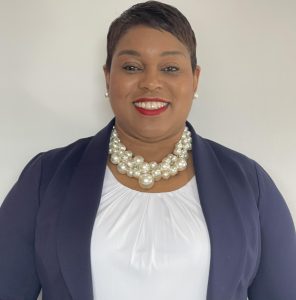Opening of the Testament to Hardship
October 20, 2016
On a grey Saturday morning, people from around the country gathered to witness the long-awaited opening of a museum, a museum that is a testament to the hardships and struggles that African-Americans have gone through in our nation’s history. Whether it be the torture that slaves endured or the discrimination of the early and mid-1900s, it can all be seen in the National Museum of African American History and Culture.
On the 24th of September, the National Museum of African American History and Culture officially opened. This Museum showcases historical artifacts of and relating to African-Americans, as well as cultural objects. The nearly endless supply of cultural and historical artifacts, which, according to the NMAAHC website, contains somewhere in the vicinity of 37,000 pieces including exhibits that contain posters that feature African-American groups such as Public Enemy, paintings from artists who lived in times of hardship, a dress that was owned by Rosa Parks, and shackles worn by slaves.
This opening has truly been long-awaited, as its development and eventual unveiling was almost a decade in the making. Congress established the museum in 2003 and the idea for it has been in existence even longer, as Rep. John Lewis of Georgia began fighting for its creation in Congress.
The opening ceremony was truly an encapturing event. Speakers such as Calvin O. Butts, Oprah Winfrey, and Loney G. Bunch each had their own passionate, emotional speeches. Just by listening to their words, one could feel the excitement of the opening of the museum, yet grief for the reason for needing to have one. One could almost truly feel the torment that African-Americans endured for generations.
Among those speaking was President Obama, whose words took on special meaning, especially for those who listened and never thought this moment and this beautiful piece of architecture would ever come to be. The President spoke of the nation’s heritage and the heritage of African-Americans and how they were one in the same. Quoting Langston Hughes, he said “I, too, am America.” Obama finished his speech by introducing the daughter of a man who was a slave, Ruth Bonner, and her family. The Bonner family received the honor of ringing the Freedom Bell, which itself is an is rich in historical significance. It was the bell that rang on the opening of the first black church in 1776. Truly motivated and with the help of her family, Ruth Bonner made her way and rang the freedom bell. In Obama’s speech he said, “The ringing of this bell echos the ring of the bells signaling the signing of the Emancipation. The sound and anthem of American freedom.” The pride and joy in the faces of the Bonner family reflected what America as a whole felt.
The building itself is as symbolic as the content it holds. Lead designer David Adjaye and architect Philip Freelon worked together to create the massive building that, essentially, doubles as a piece of art. According to the museum’s website, its shape takes inspiration from the three-tiered crowns used in Yourban art from West Africa. The color is a symbol of the metal work done by slaves in the United States.
Following the nearly 2-hour opening ceremony was the Freedom Sounds Festival that was filled with joy and excitement. At the festival, which ran from 12:00 p.m.-5:00 p.m. and 6:00 p.m.-9:00 p.m., took place on Saturday and Sunday near the Washington Monument. The crowd was ecstatic to watch bands such as Public Enemy, an African American, hip-hop band, famous in the 80s and 90s; perform as well as Living Colour and the Roots? The festival continued into Sunday, when the excitement and joy followed. The entire weekend was dedicated to the opening of this long-overdue, much-needed testament to the hardships of African-Americans known as the National Museum of African American History and Culture.












































